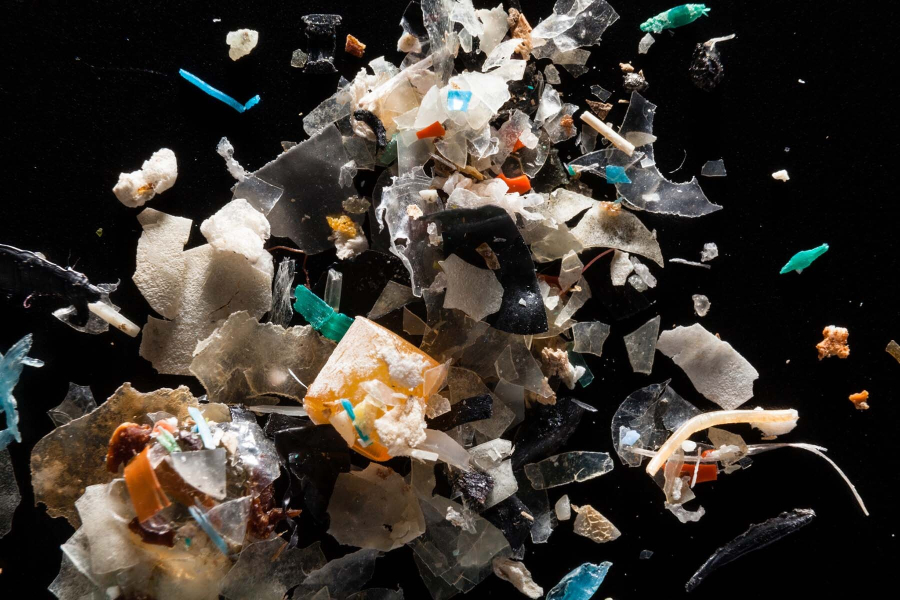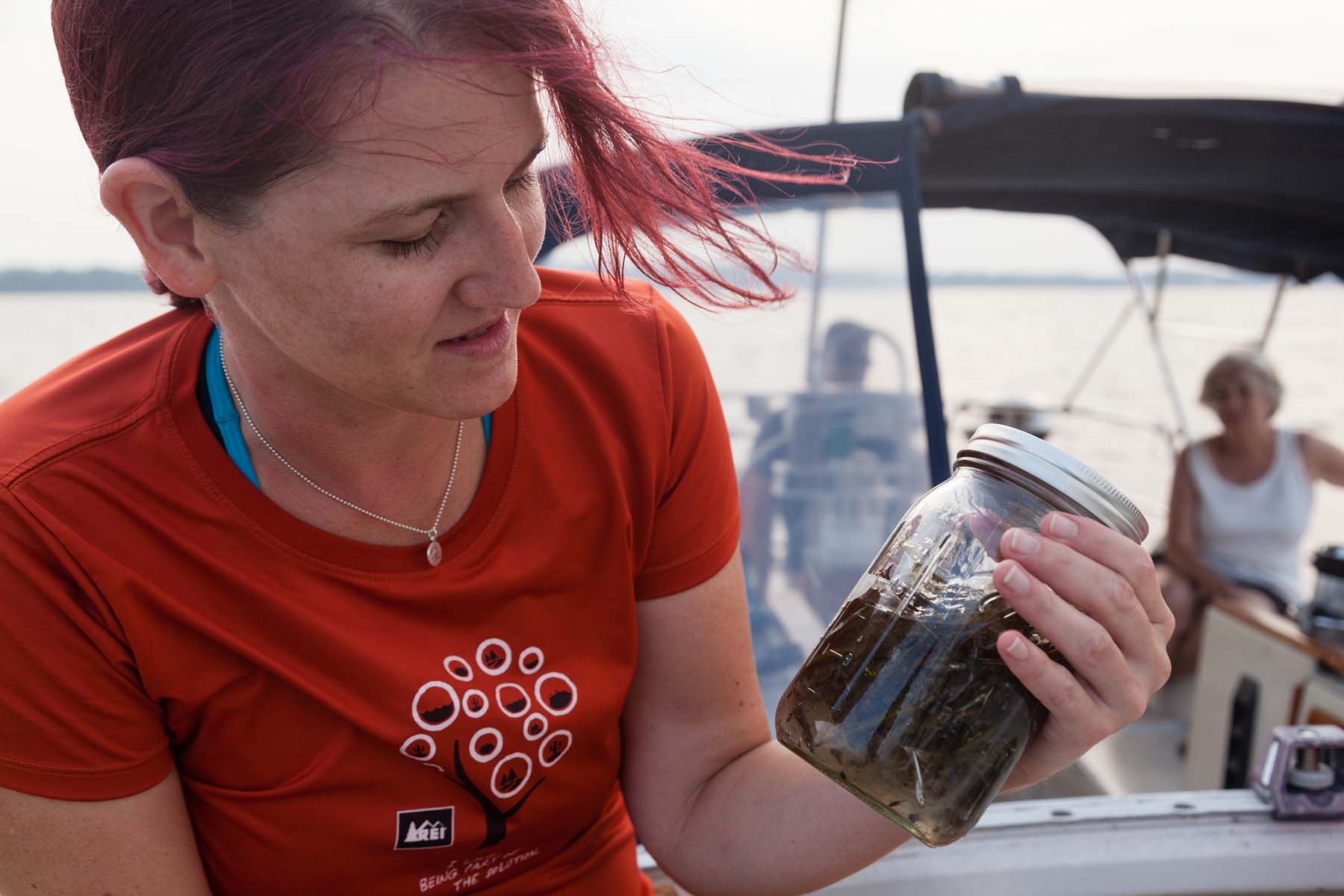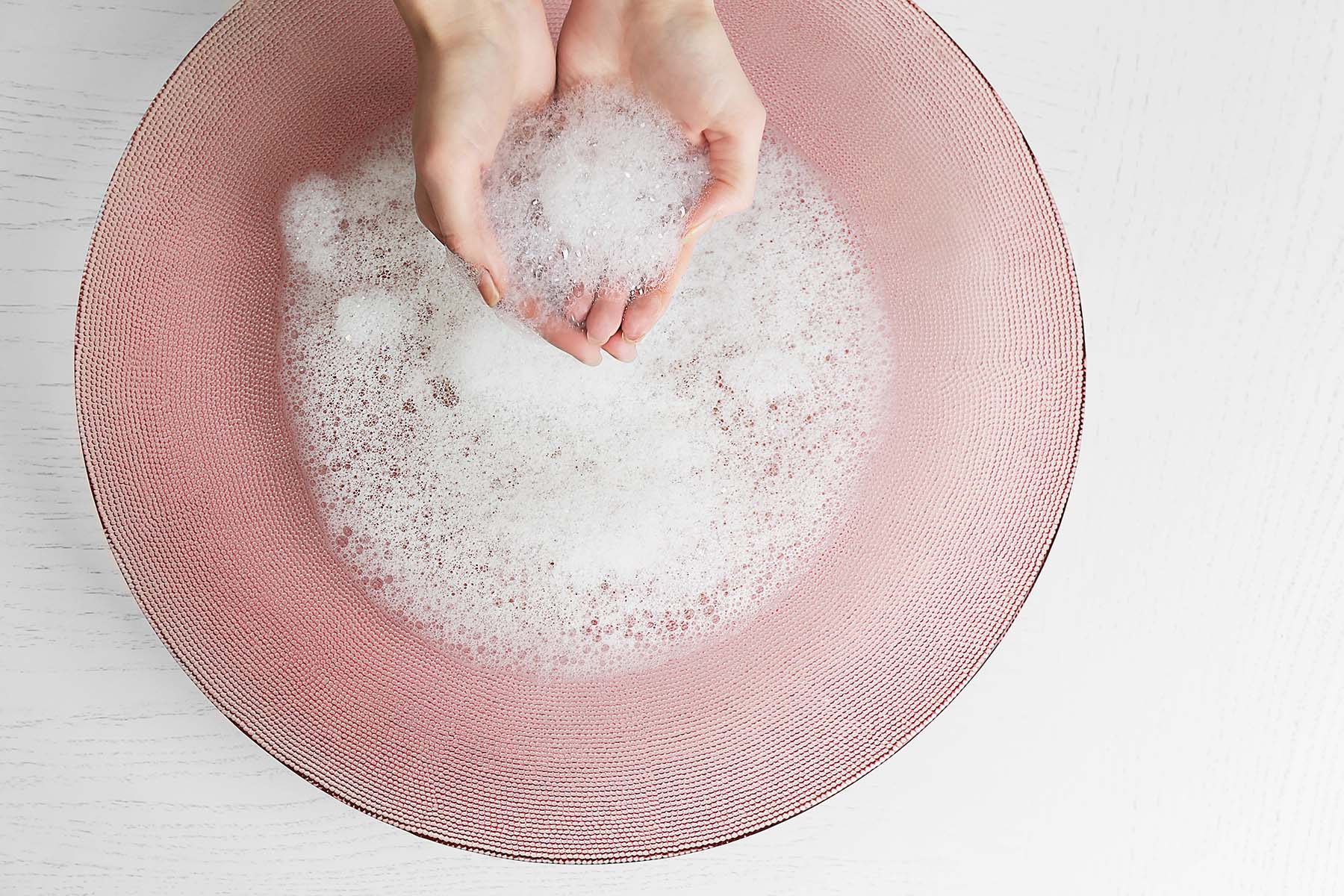By the Numbers: 8 billion
The amount of microbeads released each day into aquatic habitats across the United States.

As humans have shaped the world around us, we have ensured that lakes, rivers, oceans and even Arctic sea ice have something in common: these waters now contain microscopic pieces of plastic from our cosmetics, cleaners and synthetic clothing capable of harming the growth, development and behavior of marine life.
Known as microplastics, these debris are smaller than the width of a common drinking straw and are appearing in more regions and in bigger quantities around the world. In 2014, scientists reported the presence of microplastics in four Chesapeake Bay rivers: the Patapsco, Rhode, Corsica and Magothy. In 2015, scientists used a manta trawl to skim the surface of waters across the Bay and visually observed microplastics in many of the 60 samples that were taken.
The danger of microplastics is in their size, their makeup and the things that can happen to them once they are in the water. Microplastics are incredibly small and can be absorbed or ingested by a wide range of animals up and down the food chain. Microplastics are made from synthetic polymers that contain chemicals that can leach into the environment. And microplastics can “pick up” exotic organisms, pathogens and toxic contaminants and carry them over long distances. Research shows that microplastics have been ingested by hundreds of species—including some that we consume as food—and can affect the reproduction rate of zooplankton, the weight of benthic worms and the behavior of fish.

One kind of microplastic that has been the focus of media attention—as well as a successful movement to ban the item from personal care products—is the microbead: synthetic polymers that have replaced pumice, oatmeal and other natural exfoliants as abrasive scrubbers. Their fate is inherent in their design: many microbeads are meant to be washed down the drain, moving through wastewater treatment plants and into rivers and streams as direct effluent or as so-called “biosolids” applied to farm fields and pushed by rain or wind back into the water. In the United States alone, an estimated eight billion microbeads are released into aquatic habitats every day. Assuming these beads are 100 micrometer spheres—close to the diameter of a human hair—you can wrap them around the earth more than seven times.
Because microbeads are a significant source of microplastics, any effort to eliminate them removes a significant source of microplastics from the environment. In a technical review of microbeads and microplastics in the Chesapeake Bay, our Scientific and Technical Advisory Committee (STAC) called federal legislation to ban microbeads from rinse-off personal care products “laudable,” but found the regulations’ scope is too limited to address the whole microplastics—and even the whole microbead—problem.

As experts noted in the STAC report, a focus on rinse-off personal care products does not eliminate all sources of microbeads from the environment. Cosmetics, deodorants, lotions and non-personal care products like industrial and household cleaners aren’t addressed. So this legislation could be seen as the beginning of a suite of management strategies for microbeads and microplastics. To maintain momentum in the fight against microplastics, experts recommend improving techniques to detect the presence, composition and quantities of microplastics in the environment; initiating a long-term study on the amount, sources and sinks of microplastics in the Bay; improving waste management and promoting sustainable product design; and leading educational outreach and legislation on the topic.
As part of the Chesapeake Bay Program's work toward its Toxic Contaminants Research Outcome, partners have committed to gathering more information on microplastics and other issues of emerging concern. Learn about our efforts to combat microplastics and how you can help.

Comments
This thing is very thing if we can’t eliminate the things that are thinging up our bay can we remove the things to make the thing clear and thing the things be healthy. This this is a vert important matter. Thank you for the time you took to read this thing.
Thank you!
Your comment has been received. Before it can be published, the comment will be reviewed by our team to ensure it adheres with our rules of engagement.
Back to recent stories